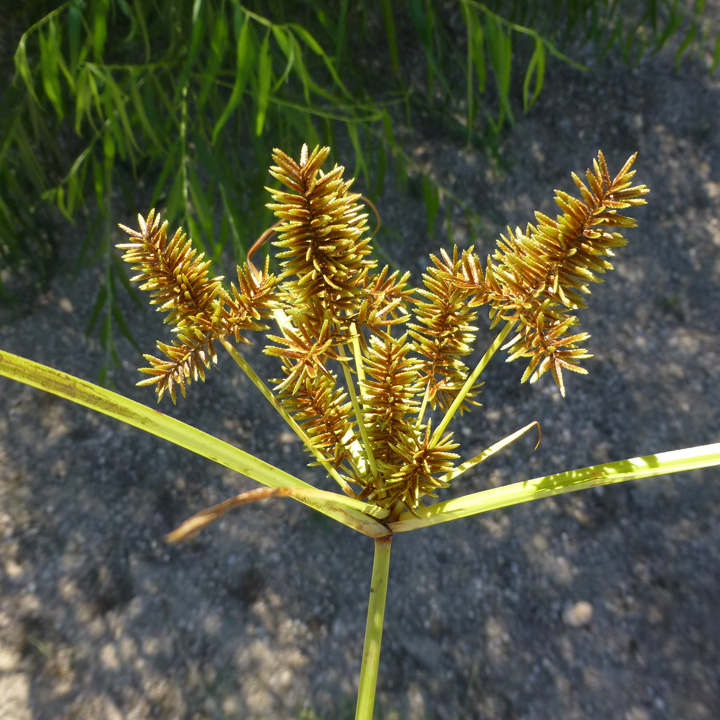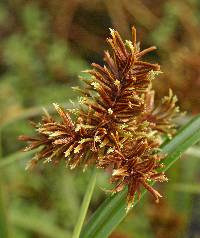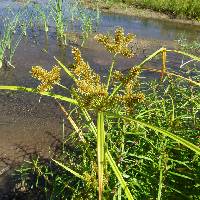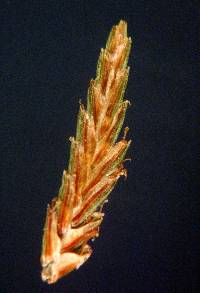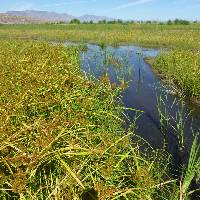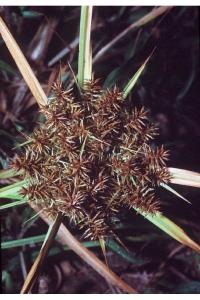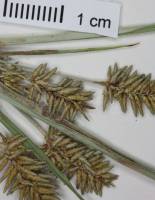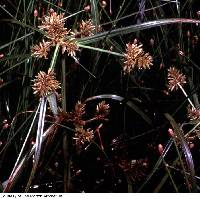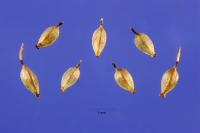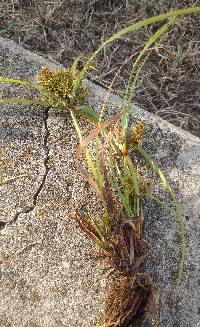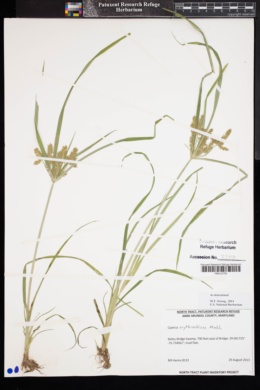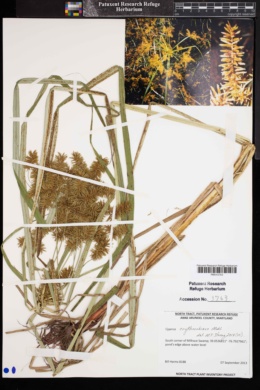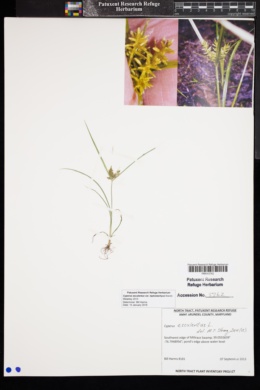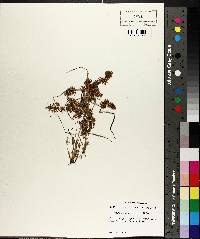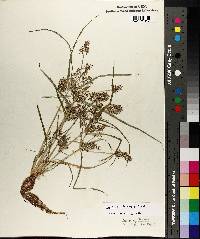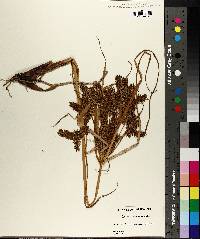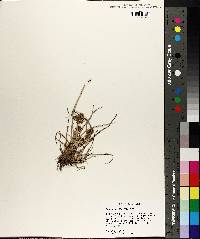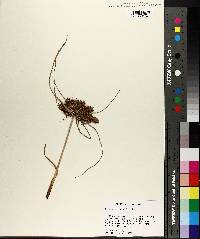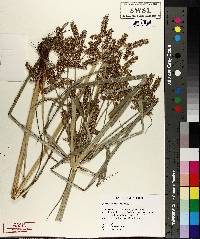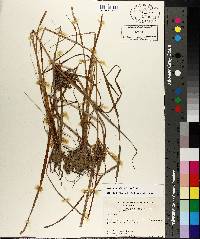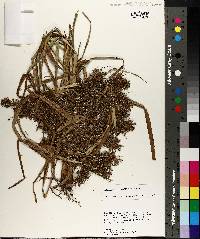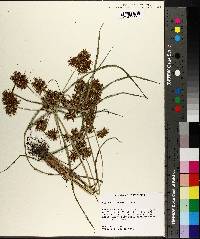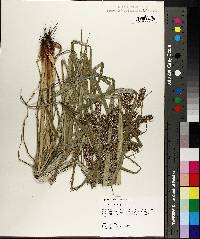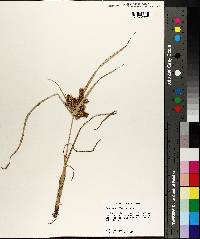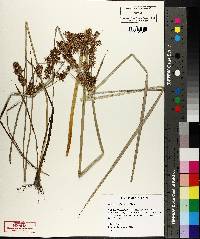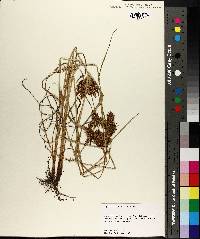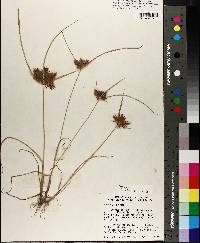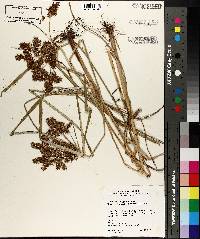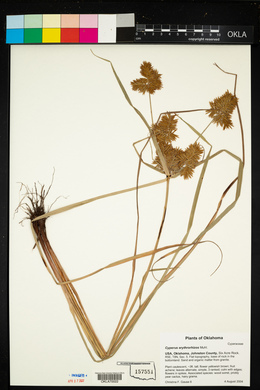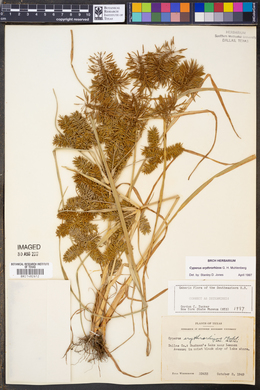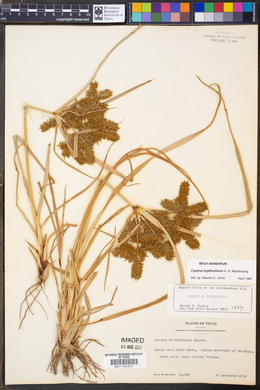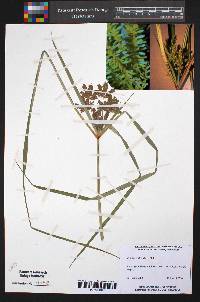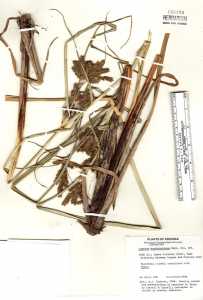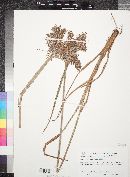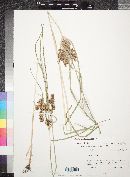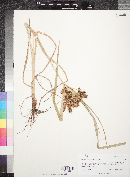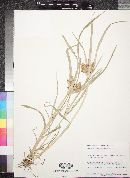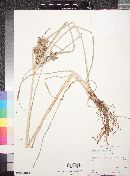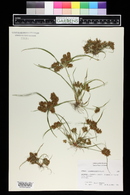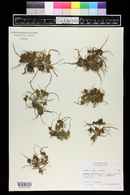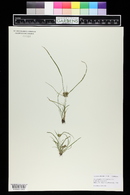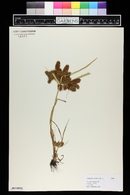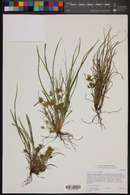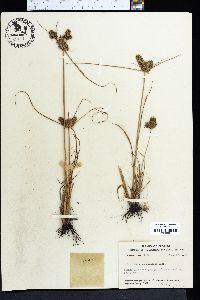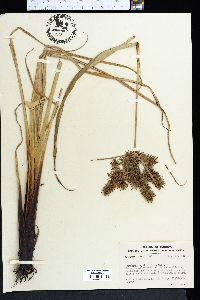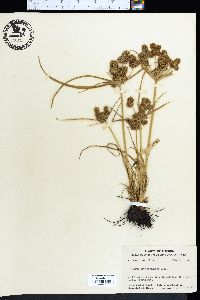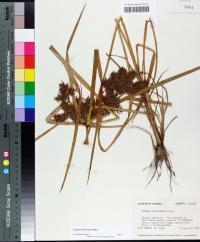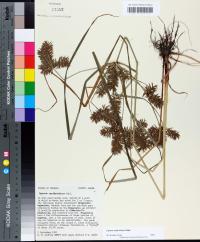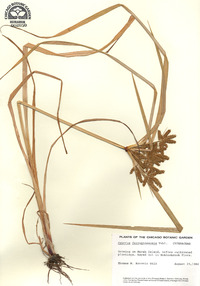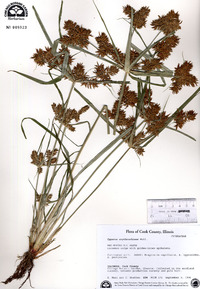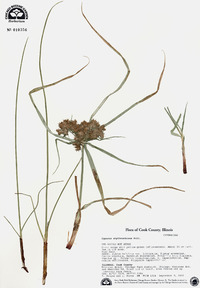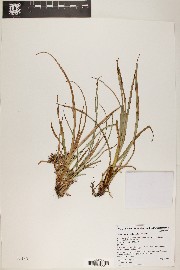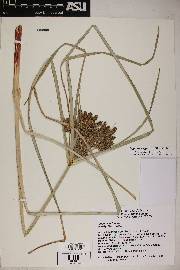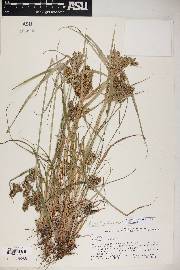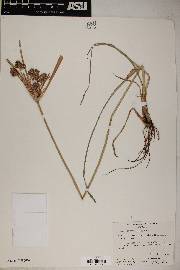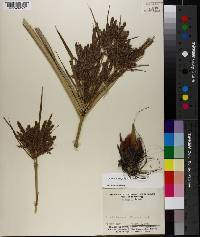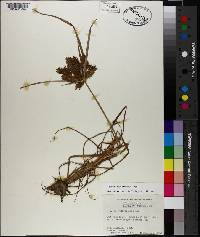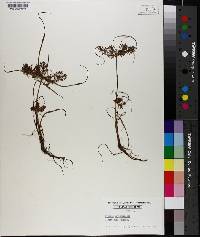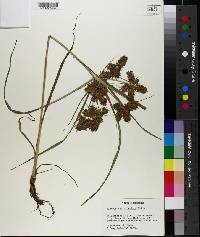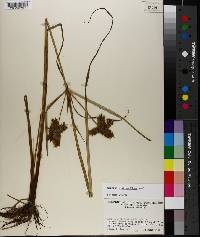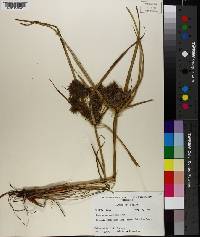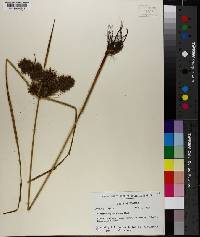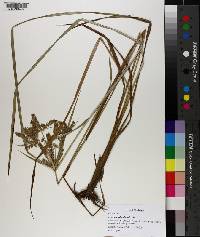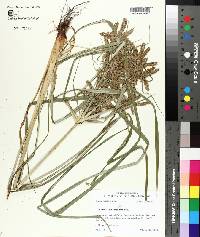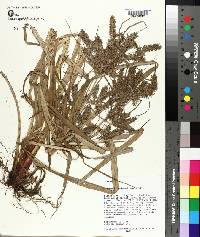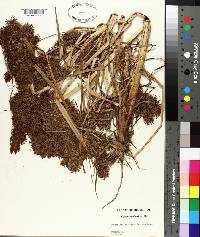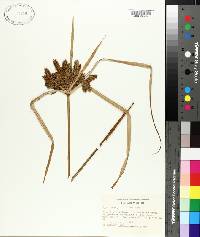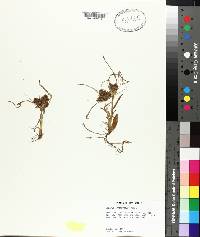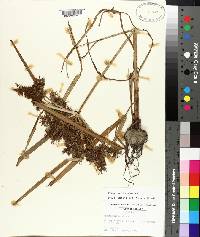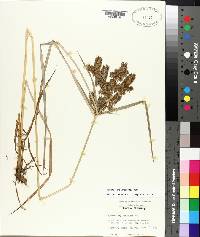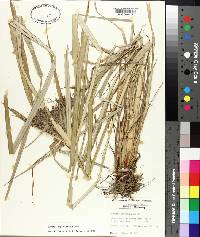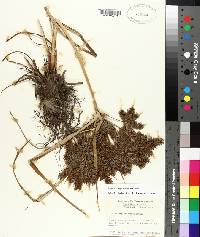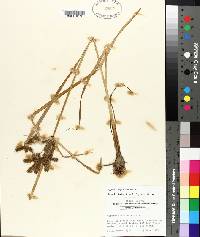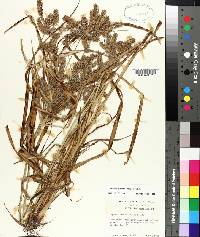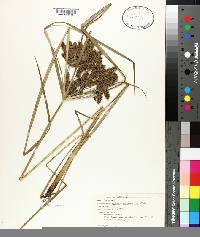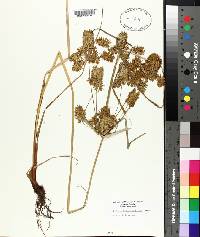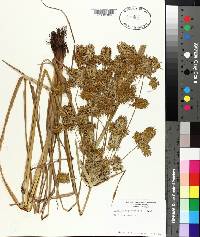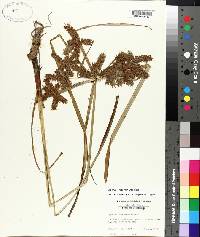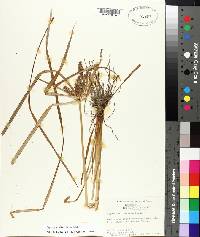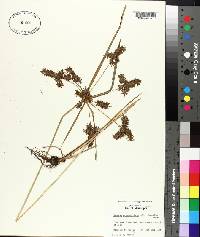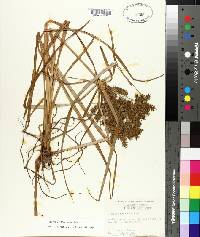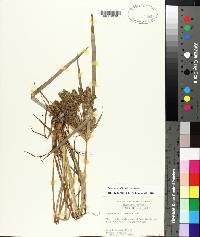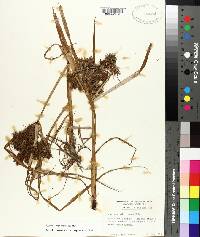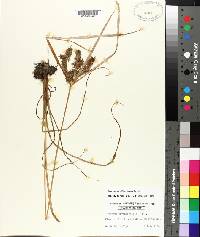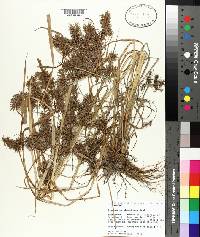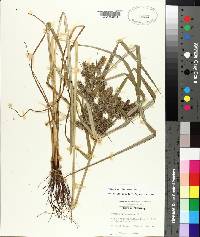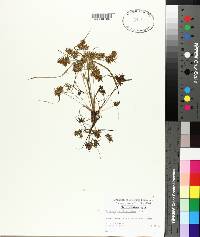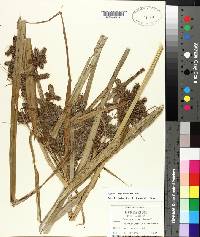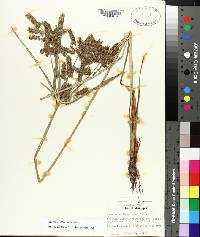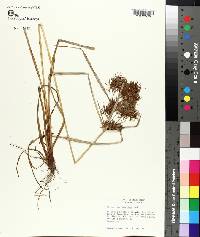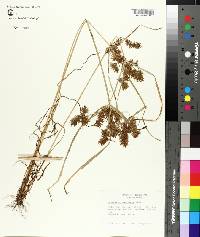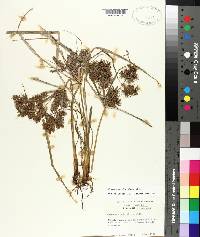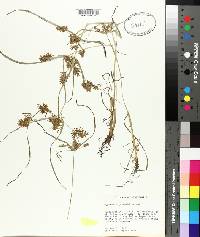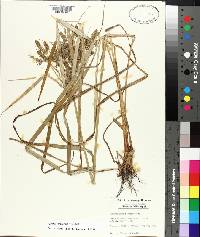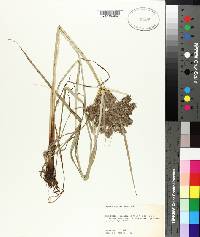Cyperus erythrorhizos
|
|
|
|
Family: Cyperaceae
Red-Root Flat Sedge, more...redroot flatsedge, redroot nutgrass
[Cyperus erythrorrhizos Muhl., moreCyperus halei Torr. ex Britt., Cyperus occidentalis] |
Herbs, annual, cespitose. Culms trigonous to roundly trigonous, (0.5-)5-25(-105) cm × 1-2.5(-7.5) mm, glabrous. Leaves flat to inversely W-shaped, 5-25(-90) cm × 2-5(-11) mm. Inflorescences: spikes 1-3(-6), rather densely cylindric-ovoid, (4-)10-30(-45) × (6-)10-16(-23) mm; rays 2-6(-12), 1-8(-28) cm; bracts (3-)5-7(-11), horizontal to ascending at 30°, inversely W-shaped, (3-)10-20(-70) cm × 1-3(-12) mm; rachilla persistent, at maturity becoming laterally free, remaining firmly attached proximally, wings 0.3(-0.4) mm wide. Spikelets (20-)40-80, linear, quadrangular, 3-8(-11) × 1-1.5 mm; floral scales deciduous, 6-16(-30), appressed, laterally light brown with reddish speckles, medially greenish, laterally ribless, medially 3-ribbed, oblong-ovate to obovate, quadrangular to subterete, 1.3-1.5 × 0.8-1.2 mm, apex obtuse, mucronulate. Flowers: anthers 0.2-0.3 mm, connectives 0.1 mm; styles 0.7-0.8 mm; stigmas 0.4 mm. Achenes light grayish to brown, sessile, ovoid, 0.4-)0.7-1 × 0.4-0.6 mm, apex rounded, apiculate, surfaces glabrous. Fruiting summer. Emergent shorelines; 0-1500 m; Man., Ont.; Ala., Ariz., Ark., Calif., Conn., Del., D.C., Fla., Ga., Ill., Ind., Iowa, Kans., Ky., La., Maine, Md., Mass., Mich., Minn., Miss., Mo., Nebr., Nev., N.H., N.J., N.Mex., N.Y., N.C., N.Dak., Ohio, Okla., Oreg., Pa., R.I., S.C., S.Dak., Tenn., Tex., Utah, Va., Wash., W.Va., Wis.; Mexico (Baja California). Annual herb with red roots, tufted 5 cm - 0.5 m tall Leaves: basal, alternate, 5 - 25 cm long, 2 - 9 mm wide, flat or inversely W-shaped in cross-section, linear, parallel-veined, keeled beneath, with a sheathing base that encloses the stem. Inflorescence: consisting of one to three terminal spikes, subtended by spirally arranged leafy bracts. Bracts five to seven, horizontal to ascending, unequal, 10 - 20 cm long, 1 - 3 mm wide, inversely W-shaped in cross-section. Rays (branches of inflorescence) two to six, 1 - 8 cm long. Spikes some stalkless, 1 - 4 cm long, 1 - 1.5 cm wide, densely cylindrical to egg-shaped, consisting of 40 to 80 spikelets. Flowers: minute, in the axil of a floral scale, lacking sepals and petals. Stamens exserted. Anthers under 0.5 mm long. Pistil one. Style over 0.5 mm long. Fruit: a one-seeded achene, stalkless, white to light gray to brownish, about 1 mm long and 0.5 mm wide, egg-shaped with a rounded apex bearing a tiny point, unequally three-angled. Seed with a thin, non-adherent wall. Culm: 5 cm - 0.5 m long, 1 - 2.5 mm wide, triangular to roundly triangular in cross-section, solid. Spikelets: 3 - 12 mm long, 1 - 1.5 mm wide, linear, four-angled, subtended by two small bracts, with six to sixteen floral scales. Scales appressed, greenish down the middle, light brown and reddish-speckled along the sides, about 1.5 mm long and 1 mm wide, oblong egg-shaped to reverse egg-shaped with a rounded apex bearing a tiny point, four-angled to nearly circular in cross-section, three-ribbed down the middle, lowest one empty. Similar species: No information at this time. Flowering: late July to late September Habitat and ecology: Frequent along shores and ditches, often in alkaline areas. Occurence in the Chicago region: native Etymology: Cyperus is the ancient Greek word for sedge. Erythrorhizos means "with red roots." Author: The Morton Arboretum Stout, tufted annual 1-7 dm with red roots; lvs crowded toward the base, with elongate blade 2-9 mm wide; invol bracts several, elongate, unequal; infl of clustered, cylindric spikes, the terminal cluster sessile, the others on rays to 7 cm, each spike 1-4 cm, with numerous serially arranged spikelets on an elongate rachis; spikelets 3-12 נ1-1.5 mm, 6-many-fld; rachilla persistent, with narrow, deciduous, hyaline wings; scales 1.2-1.5 mm, ovate to elliptic, with prominent, green, minutely excurrent keel, 1 or 2 adjacent pairs of much finer lateral nerves, and narrow, golden- brown margins; achenes pearly-white, unequally trigonous, 0.7-1 mm; 2n=96. Streambanks and other wet places; Mass., N.H., and N.Y. to Ont. and N.D., s. to Ark., Tex., and Ariz., and irregularly to the Pacific. Gleason, Henry A. & Cronquist, Arthur J. 1991. Manual of vascular plants of northeastern United States and adjacent Canada. lxxv + 910 pp. ©The New York Botanical Garden. All rights reserved. Used by permission. From Flora of Indiana (1940) by Charles C. Deam Infrequent throughout the state but usually common where it is found. It is generally found on the muddy shores of streams, in dried-up sloughs, and along ditches. |
|
|
|

